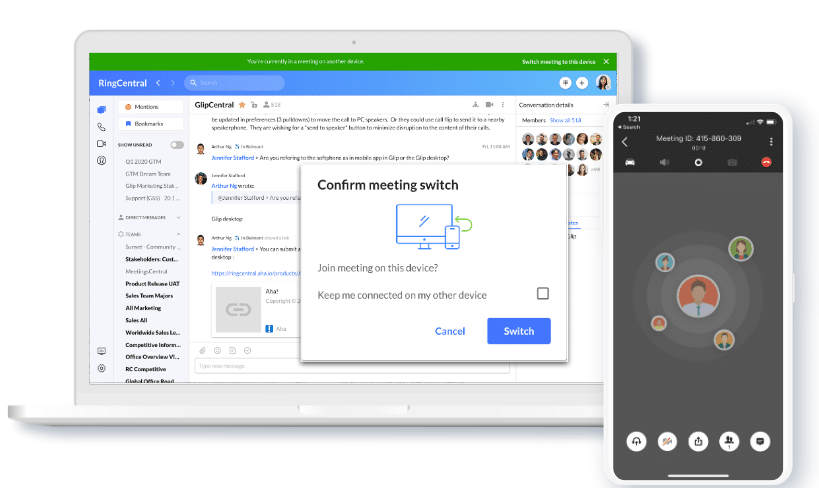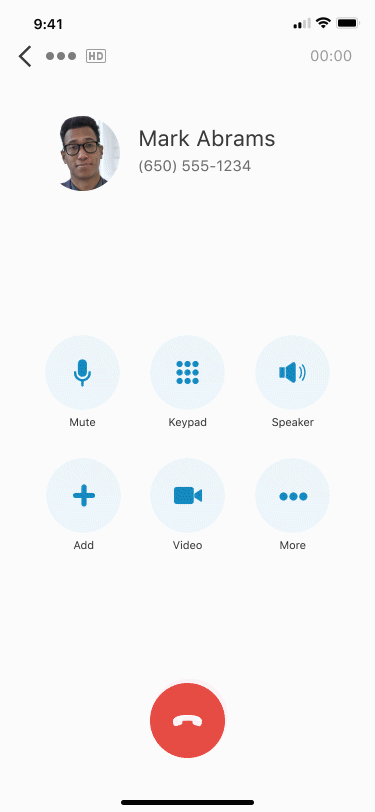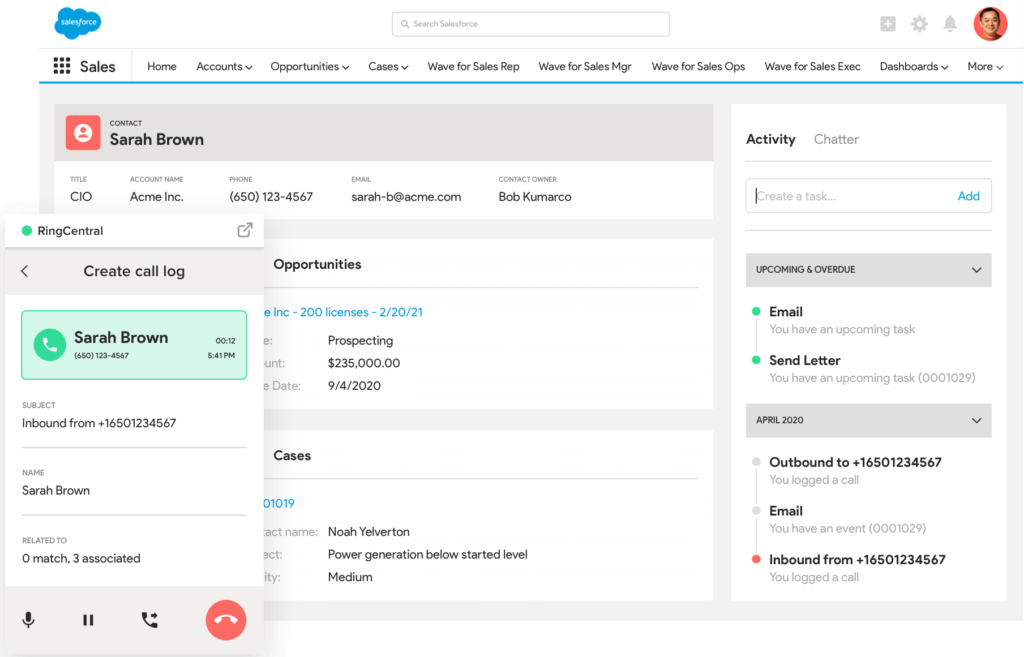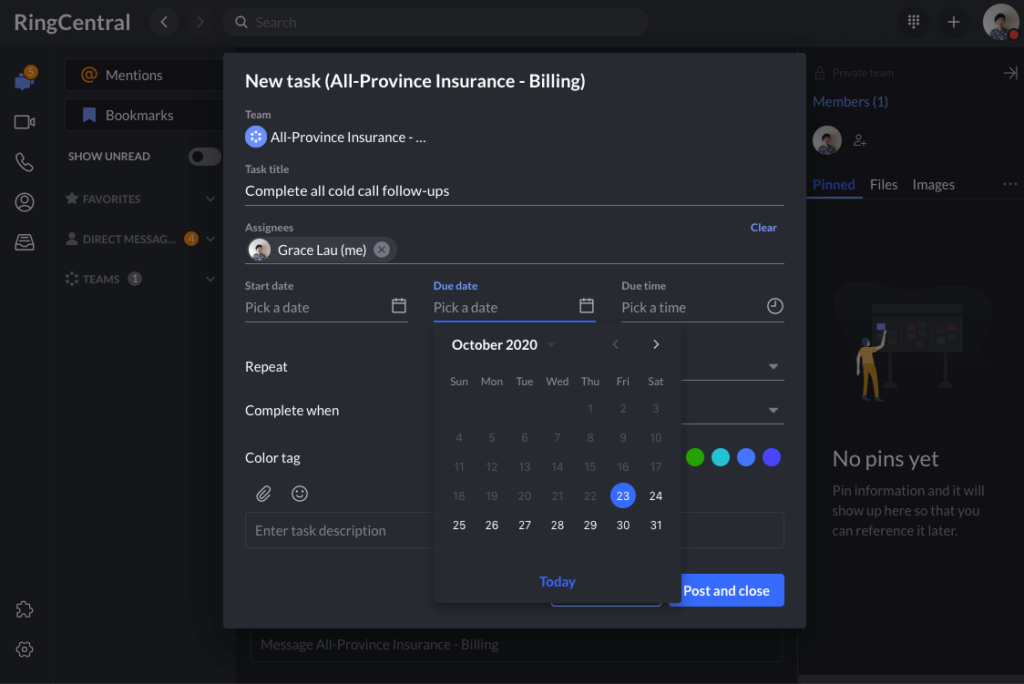Miscommunications happen pretty much every day, multiple times a day. Why doesn’t the customer support rep just get what I need? Why are the dishes still in the sink, didn’t I remind her of that already?
In our personal lives, misunderstandings are sometimes disastrous, but mainly they’re just bothersome and kind of irritating in the moment.
In our professional lives though, the stakes are much higher. A miscommunication in the moment can fuel long-lasting effects that put an end to what every business values: relationships, profits, and trust.
If a message gets lost in translation and causes a proposal to miss a deadline, you’re looking at more than just potential revenue lost. Everything from your brand reputation to credibility as a business can be affected when the message isn’t being communicated clearly.
Let’s be fair—no one actually tries to be actively bad at communicating. But it doesn’t necessarily take a poor communicator to cause misunderstandings. Using the wrong tools to deliver a message or little mistakes like sending messages to someone who’s not aware you’re reaching out to them can often be culprits of miscommunication.
That’s why understanding the importance of communication in business and learning how to deliver messages effectively shouldn’t be assumed as common sense. Taking the obvious out of what you already know and giving you a more practical look into how to strengthen your business communication, we’ll cover:
- What is business communication—and how exactly does it impact your day-to-day work?
- What are the main types of business communication?
- Measuring success: how to know if you’re doing business communication well
Forget what the textbooks say, here’s what “business communication” really is
The term business communication is pretty vague. Ask anyone and they’ll give you their own definition of what it means. If you try to look up a formal definition of it, you’ll probably end up with something like this:
Transmission of a message or information in order to promote an organization’s goals, objectives, aims, and activities, as well as increase profits within the company.
But this isn’t exactly helpful to get a team of people aligned on how exactly to do that—and to do that well.
Here’s another, more practical way you can think about business communications:
Choosing the right ways to express your thoughts and ideas to other people so that they can be best understood.
The right ways will come down to:
- Choice of words and language
- Tone of voice
- Channel of communication (in-person vs online)
And “other people” can be:
- Coworkers
- Managers or executives
- Customers or clients
- Investors
- The media
Understanding happens when the person being spoken to can:
- Recognize where the speaker is coming from (in a disagreement, the listener can still identify with the other person’s point of view)
- Take action based on clear direction or feedback (members of a team create an action plan based on the project manager’s input)
- Gain knowledge from what they’ve just heard (cross-functional teams can learn more about each other’s roles, even if it doesn’t directly impact their own)
In the context of business, good communication will result in:
- Resolved conflicts or prevention of potential ones from arising (by removing barriers to understanding)
- Clarity when something isn’t working
- Better relationships by nurturing mutual respect through shared understanding
What’s the purpose of business communication?
Being aware of the four reasons for communicating will help you better decide on the right way of communicating. For each, pay attention to when communication might happen so you can choose the best channel for it to get delivered through. Remember, the purpose of good business communication is to elicit full understanding.
1) Between coworkers
Talking or exchanging information amongst those you work with falls into this category. This happens in a team environment while working on a project together, or between departments like when there’s a handoff between the product and marketing team before a product launch.
Examples of when information gets exchanged:
- To make joint decisions, problem-solve, or brainstorm solutions
- To share individual learnings within a team or across departments
- To train new employees
- To collaborate on working documents
Generally speaking, most communication will happen through channels where conversations can move quickly, such as through phone/video calls, instant messages, and texts.
2) From management to employees
This comes from the top down with a leader sharing news to their support team. This typically involves providing direction to those who report to them or sharing broad news on the business’s performance and agenda to align the team on a focused vision.
Examples of when information gets exchanged:
- To give actionable feedback on employee performance
- To share news of business changes, performance, or growth plans
- To be the decision-maker to resolve problems
Because communication from the top down happens less frequently than between employees, typically more formal channels of communications are used, such as in-person, or through emails or documents.
3) From employees to management
This type of communication comes from the bottom up when an employee shares information with a higher up. Usually, this is to communicate progress or results so that the leader has a pulse on activities that they’re not part of during the day to day.
Examples of when information gets exchanged:
- To share progress on how work or projects are going
- To provide data, analytics, or financial reports
- To discuss plans and goals for professional growth
Similar to the last type, leaders might not be speaking to employees every day. Depending on your organization’s culture (how flat or structured the hierarchy of people are), communication here can happen as formally or informally as everyone agrees on. In a more traditional business, communication tends to be formal and take place in person or over reports, emails, or documents.
4) To external stakeholders
External communication is any communication that happens with individuals outside of your business. Think prospects, customers, investors, or even the press. Often in these exchanges, you want to represent your brand consistently and confidently to those who may be hearing from you for the first time.
Examples of when information gets exchanged:
- Presenting your business’s traction to raise capital from investors
- Participating in community engagement (fundraisers and events)
- Reaching customers via social media marketing and advertising
- Sharing a press release on major business achievements
Because these forms of communication rarely get to be accompanied by a voiceover, it needs to be factually correct, succinct, and clear to the receiver. These types of communication are normally shared in the form of sales presentations or proposals, online ads, white papers, or blogs on your business’s website.
What are the main types of business communication?
In the last two decades, the time spent on calls, emails, and meetings has increased by 25 to 50%. And yet, only one in four employees feel highly engaged.1 Why is it that we’re spending more time communicating but still not getting enough out of it?
Clearly, something’s broken.
The biggest thing you can do to improve engagement is to have the right technology in place. This is especially true with a growing remote workforce that relies on a smorgasbord of other means to communicate in lieu of face-to-face time.
So, empower your team to better connect with fewer misunderstandings using the right communication tools. This means providing a range of options so that they can use the right channel depending on what they’re trying to accomplish.
But let’s not confuse having options with needing to go out and buy multiple disparate tools. The thought of using three or four different apps just to talk every day just isn’t very efficient—not to mention, most people don’t even have enough screen real estate to support all that.
One key part of the equation for setting up effective business communication? Streamline how many tools you’re asking people to use so they don’t get overwhelmed by a bunch of different video chat apps and messaging apps and… you get it.
The neat thing about RingCentral is that its desktop and mobile app can support a range of communication needs (like video chats, phone calls, texts) with internal folks…
While its customer engagement platform allows you to also communicating with inbound and outbound prospects and customers without getting your wires crossed:
Okay. You probably already know that you don’t need to send a new email for every project update when it can be tracked in a project management tool. Nor should you rely on messaging to facilitate a brainstorming session.
But not every situation is so obvious, and plus, not everyone is on the same page about these things. So let’s tease out the specifics of what each method of communication is meant for so that you and your team can get better aligned on how to use each one.
Video calls
The closest replacement for face-to-face meetings is good ol’ video conferencing. You don’t have to call it a “conference” to put pressure on the occasion, but that’s how some people like to refer to it because it can imply a more formal meeting.
There are different tools you can use to host video calls. That feature alone isn’t super unique. So, when you’re looking for a video conferencing app, try to think of the specific instances when you might need to be on a video call. Will you need to be taking calls while you’re out? Are you often away from your desk or running errands?
Then you should find a tool that fits that working style. For example, RingCentral (not to toot our own horn too much) is the ability to switch the call to any device. On a call at your computer right now, but need to leave to pick up your kids? Just flip it to your phone—without interrupting the conversation:

Oh, and not only that, you can also flip a phone call to a video call instantly if you’re using the RingCentral app (maybe you need to share your screen, or maybe you realized that the conversation is probably better face to face):

If you’re trying to understand the effectiveness of your team’s communication on a data level, RingCentral also lets you dive into what’s happening offscreen. You can monitor the overall quality of video meetings taking place even when it’s live. This is huge.
Say you’re on an important video call with a client and your picture or audio connection starts bugging out. You (or your IT team) can troubleshoot it within minutes in the admin panel and identify exactly what’s happening. With an instant resolve around the corner, you get back to the conversation to focus on your client.
In modern business, good communication is more than just making sure that what you say is understood (although, that’s important too, and you might want to brush up on these four techniques). It’s also about making sure that the digital tools you use allows you to seamlessly do so.
Best for:
- First-time meetings such for project kickoffs (so everyone can introduce themselves and get acquainted)
- Meetings where everyone needs to review the same document together in real time (via screen sharing)
- Webinars and presentations (so participants can follow along with the material on screen and see the host)
Not so great for:
- Ad hoc requests to connect (not everyone is camera-ready at a moment’s notice—it’s nice to respect that)
- A short question that can be handled by text or chat instead
- Large meetings with over 10 people (it can be distracting to see so many faces at once)
Phone calls
The days of being tethered to our work desks to take a phone call are so behind us. But no matter what, almost every small business will always still need a phone. (And if you’re not on a cloud-based phone system yet, stop reading and get yourself on one. Really, it’s a game changer.)
Yes, on one hand you’re replacing a physical phone with a digital one and that in itself is more convenient than a landline. But think about all the other possibilities this brings:
- Integrations with your CRM to keep a record of all customer conversations so your can build unique profiles of each customer. For example, RingCentral integrates with Salesforce, HubSpot, and other popular CRMs to let you dial prospects and customers right from your computer:

- Voicemails you don’t have to listen to, but can read the live transcriptions of—here’s a quick look at how it works in RingCentral’s app:
- Performance reports to see trends on call queues, users, and calls to improve quality of service
Best for:
- Making joint decisions on the spot (and giving everyone the opportunity to clarify and elaborate)
- Set meetings that happen regularly (1:1 check-ins, team meetings, and status updates)
Not so great for:
- Brief clarifications or one-off questions. A phone call might suggest it’s more urgent than it actually is (“Hey—did you mean to send me that email? No, alright, bye”).
- Needing to reference the same document in real time together (“I’m on page six now… is everyone there?”)
Messaging
Chat, instant message, whatever name it gets these days, is no doubt a much more conversational style approach to communicating.
Not all video conferencing tools offer messaging as well, so make sure to read the fine print if this is something you think you’ll need.
The advantage of choosing an option that has both channels, of course, is that it makes it so much easier to switch between the two without needing to click to a new app. For instance, in the RingCentral app, you can message someone—but also start a video call or phone call with them if you’d like:

You can also create teams to organize conversations by projects, topics, or people. Even better, you can share and attach files directly into your conversations, as well as assign and manage tasks of each team member:

If RingCentral does one thing extremely well, it’s centralizing everything you need to collaborate in one space (especially since it integrates with so many of your favorite tools as well, like Google Drive to pull in relevant docs).
Best for:
- Day-to-day communication and collaboration for ongoing projects
- Clear up quick miscommunications or to get minor clarification on something (like from the last phone call)
- Starting multiple separate conversations with the same team of people
Not so great for:
- Situations that require brainstorming or require more active discussion to get everyone’s viewpoints
- Presenting or sharing work with management or leadership
- Dealing with customer situations that require you to share a lot of information (outlining three plan options, for instance)
🕹️ Get a hands-on look at how RingCentral works by booking a product tour:
💰 You can also use this calculator to see roughly how much your business could save by using RingCentral to support your team’s communication with each other—and clients.
What’s there left to say about email? Probably not much that you don’t already know. Except that with the other types of tools that have come into common practice, you might want to double check on your email usage. When everyone else is expecting to connect by video or message and you happen to favor email—it might be time to rethink the right time and place for it.
It’s absolutely great for situations where you need to articulate long factual thoughts in a single message. But be mindful that personalities are hard to convey through email. Plus, when you’re attaching a 50 MB file along with your email, just remember that cluttered inboxes are no joke (might be better to upload the file to a shared folder like in Google Drive, and just send the link).
Best for:
- Documenting and summarizing decisions made (following a meeting)
- Lengthy, internal announcements (new hires, updates to the business, changes to organizational structure)
Not so great for:
- When you need an urgent response back
- Discussions of any sort that require back and forth idea sharing
- Delivering bad news (not looking to renew someone’s contract? Do it the right way and pick up the phone or meet in person)
Face-to-face meetings
Even though remote meetings feel like our new norm, in-person meetings still have a valid place in business communication. What’s lost in virtual communication (like body language and tone of voice) can be picked up when you’re having a face-to-face sit-down with someone. Not to mention, in-person meetings generate an average of 13 ideas while remote meetings generate only 10 ideas on average.2 (So if you’re in a creative industry, this is something you won’t want to do away with anytime soon.)
As with anything else, there are pros and cons to both sides. Some people might attribute travel time of in-person meets to lower productivity, even though more active discussion and rapport building might take place.
Depending on the setting, in-person meetings can range in the level of formality they take on. Meeting in the common kitchen space versus meeting in a conference room can really set the tone for how productive or effective the communication will be. That’s why sharing an agenda upfront can help ground everyone on the discussion before it has a chance to get carried away.
Best for:
- First-time meetings such as project kickoffs
- Tackling tricky or complex problems that involve brainstorming (being able to whiteboard together in person is still far easier than through a screen)
- Long, multi-hour meetings or conferences (that can feel too fatiguing through video)
Not so great for:
- Tight spaces—don’t try to pack too many people in a limited space
- Short clarifications or low-importance requests (especially when the discussion is meant for just a few and not the entire group)
- Fast-moving, agile projects with lots of daily changes (having a daily standup to get on the same page is a good idea, but meeting as a team everytime there’s a new change can be a huge productivity drainer)
How to measure the success of your business communication
Measuring something like communication can feel like a real challenge since quality and understanding can be a difficult thing to track with numbers.
After all, effective business communication can feel like having a great conversation with a friend. Both parties leave feeling better understood with a greater perspective than before they met. That’s why setting KPIs and metrics to determine the effectiveness of communication doesn’t always make sense.
What’s more helpful is knowing how to prepare for good communication in advance. For instance, how do you kick a project off so that everyone feels inspired to do their best? How do you manage a conversation gone sideways before it turns into a conflict?
With that in mind, here are two checklists you can use to measure how effective your communication is. These can be used to make sure that what you’re saying can clearly be understood and that action can be taken afterwards on it.
Checklist for communicating with prospects or customers
- Personalize the interaction: Tailor the conversation to the individual at the start by addressing them by name and reiterating their concern or history with your business (“Morning Heather! We see you’ve been on our Pro plan for the last six month. Can I ask why you…”).
- Rephrase negative language: Hearing phrases like “we can’t” or “we don’t” creates doubt in the minds of frustrated customers who expect you to have a fix to their problem. Instead, try reframing your statement with phrases like “we can” or “we will” even if it means providing an alternative solution that isn’t exactly perfect.
- Empathize with their situation: As much as a customer wants you to understand their predicament, they also want you to be in tune with how you’ve caused them to feel. Take “I understand” to the next level by acknowledging their unique frustrations.
- Ask open-ended questions: Ask specific, probing questions to clarify what’s been said and also to guide the prospect or customer to share additional information about their situation.
- Actively listen: Paraphrase what you’ve just heard back to the prospect or customer to make sure you’re on their page with them.
- Use shared language: Getting overly technical with your descriptions can lose customers that aren’t as familiar with your products or services as you are. Stick to straightforward, no-jargon language to provide clear explanations and put the prospect or customer at ease.
- Stay concise: Customers expect you to have a full understanding of what you stand behind, but at the same time they also value their time. Be concise with your explanations and share what’s pertinent to the situation without overselling or trying to inject too much irrelevant information into the conversation.
- Be human: When speaking to customers over virtual formats (through social media, emails, or chats), personality is much more difficult to convey. Adopting the right tone of voice (such as one that’s conversational) opens up dialogue and makes the person on the other end more receptive to what you have to say.
Checklist for communicating with teammates
- Get clear on roles and tasks: Delegate roles at the start of the project so everyone knows who to reach out to instead of messaging the whole team.
- Set communication preferences: Discuss what forms of communication team members prefer to use. Messages for everyday project discussions? Phone calls (video-optional) for weekly status updates? Emails for reporting?
- Have a clear call to action: If tasks need to be completed, make sure they are explicitly called out with designated owners and due dates. Document them in a task manager so that everyone on the team has visibility into what’s outstanding.
- Show that you’re following: Use non-verbal cues (a subtle head nod) or short verbal cues (“I see” or “I agree”) so that the speaker can gauge your understanding (to avoid over communicating or spending too long on a point).
- Encourage two-way feedback: Following a long thought or opinion, open up the conversation and give people a chance to share their comments or concerns on what you’ve said.
- Be aware of body language: Present positive body language (lean in, hold eye contact) to show you’re engaged, interested, and approachable. Try to avoid crossing your arms or fidgeting profusely during a conversation.
- Give a head’s up: When work is delayed on your end or tasks can’t be completed by the agreed date, let your team know in advance (since there are likely task dependencies between team members).
- Take ownership for mistakes: When something goes wrong, own up to your decisions or personal errors that helped to cause it. Shifting blame or staying quiet builds uncertainty and erodes trust in a team setting.
- Give reciprocal feedback: Telling someone “this looks wrong” isn’t particularly helpful. To be effective, feedback should be clear and detailed. Even better if you can document your feedback within a shared task manager so that the individual can read through it, plus others can learn from it as well.
Why you should start paying attention to communications in business
Even though more back-and-forth conversations are happening over more channels than ever before, there’s still room for a lot to go unsaid. A wrong interpretation or misalignment can cause a lost sale, an angry customer, or a delayed project. No matter who you’re speaking to, building shared understanding is the backbone of effective communication.
When it comes to leaving a good impression, working collaboratively, diffusing a situation, coming to a joint decision, and so much more, good communication paves the way for a long-lasting, trusted relationship.
1polly.ai/blog/infographic-employee-communication
2blog.hubspot.com/sales/face-to-face-networking-stats
Originally published Nov 13, 2020, updated Jan 30, 2023





